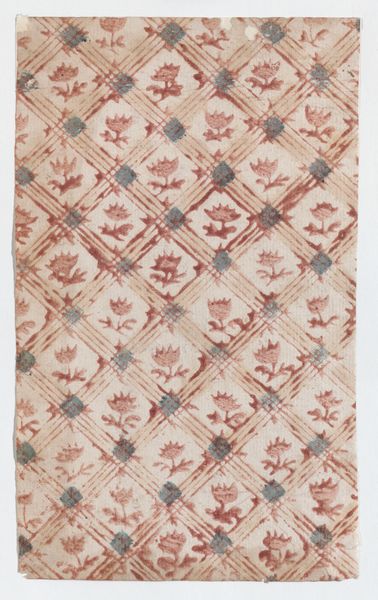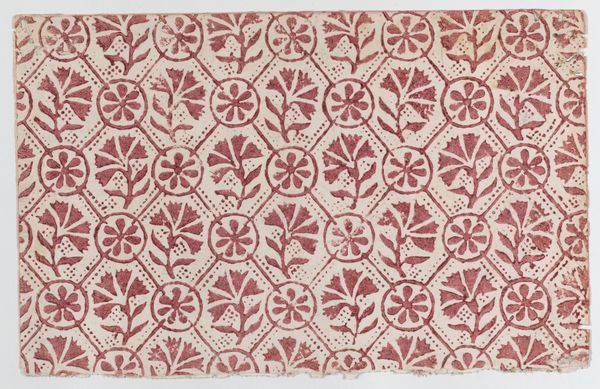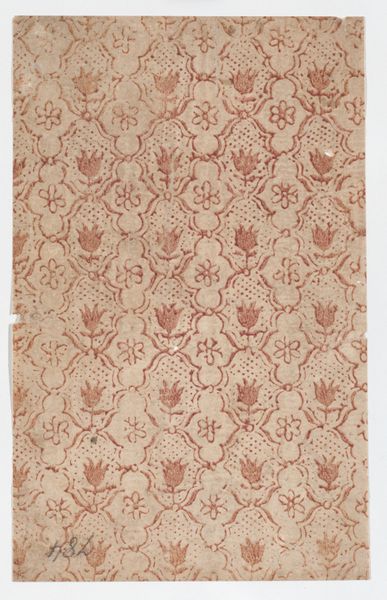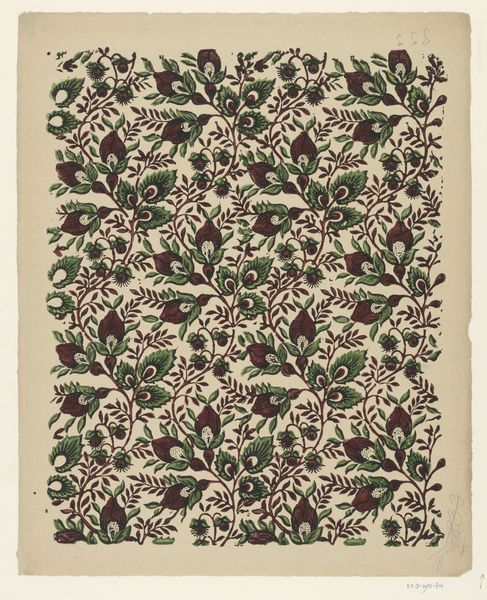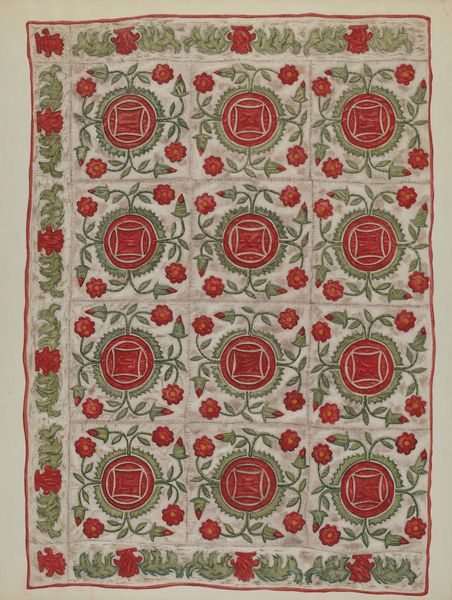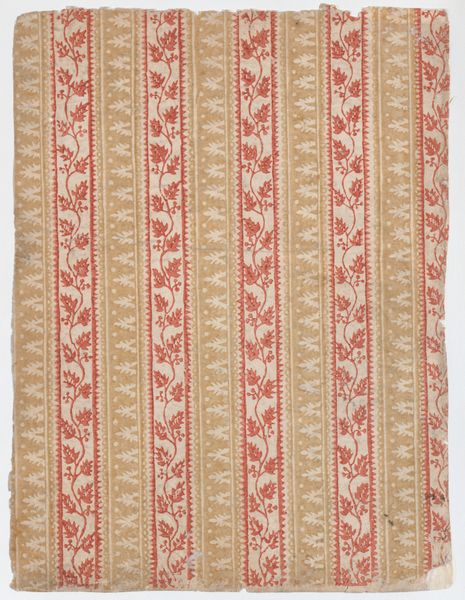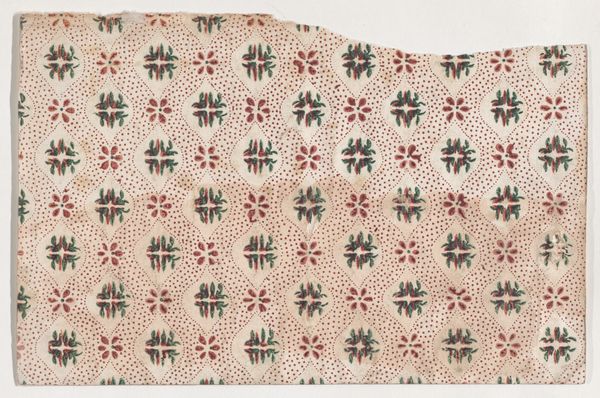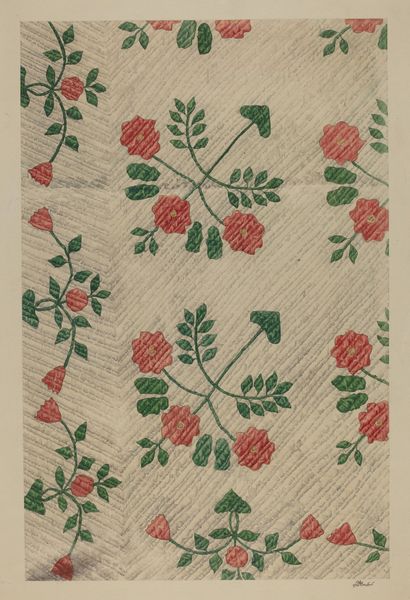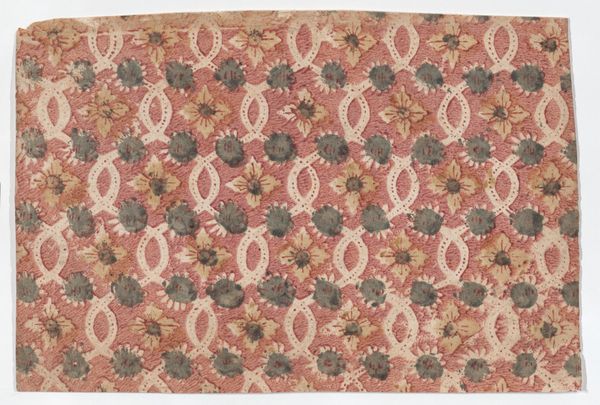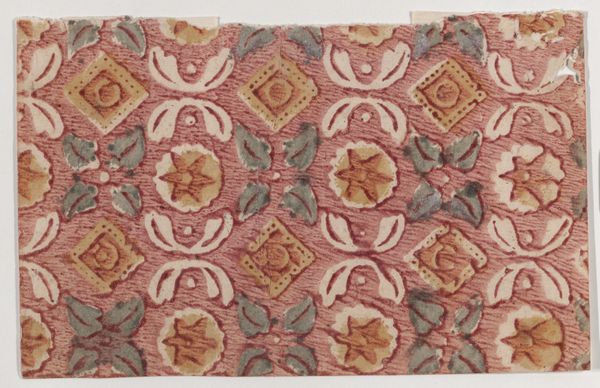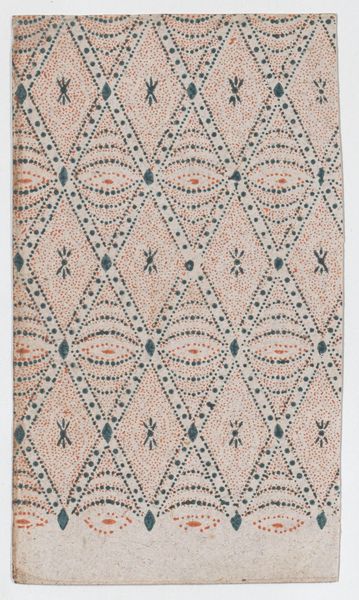
Sheet with overall floral and U shaped patterns 1800 - 1900
0:00
0:00
drawing, graphic-art, print, textile, woodblock-print
#
drawing
#
graphic-art
#
organic
# print
#
textile
#
woodblock-print
#
organic pattern
#
geometric
#
textile design
Dimensions: Sheet: 4 3/16 × 7 1/8 in. (10.7 × 18.1 cm)
Copyright: Public Domain
Editor: So, here we have an anonymous piece from between 1800 and 1900, "Sheet with overall floral and U shaped patterns," currently held at the Met. It appears to be a textile or design for one, maybe a woodblock print. The red and green pattern feels both organic and geometric at the same time. What do you see in this piece? Curator: What interests me is its potential origin as a design for textiles. This wasn't fine art meant to hang on a wall, but a template for mass production, for consumption. The anonymous artist becomes less of an individual genius and more of a skilled worker within a system. What kind of labor went into creating the woodblock? And how was that labor compensated, considering this piece is unsigned? Editor: That's interesting. I was just thinking about the design itself, not so much about the…making of it. Curator: But the design *is* the making, in a way. The repeated pattern, likely achieved through laborious carving and printing, suggests a pre-industrial attempt at something akin to mechanization. It's a proto-mass production. Editor: So you're seeing this design not just as pretty flowers and curves, but as evidence of the shift in manufacturing processes happening at the time? The labor conditions are visible within the design? Curator: Exactly. The design anticipates future innovations and anxieties tied to automation and access to the wider marketplace. Think of how the artist’s name doesn’t even matter. How were these designs circulated and who profited most from them? Editor: I never thought of textile design in quite this way before. The conversation's reframed my thinking about this "Sheet" – it’s much more loaded with historical and economic information. Curator: And hopefully made you more attentive to the conditions of production behind all art.
Comments
No comments
Be the first to comment and join the conversation on the ultimate creative platform.
